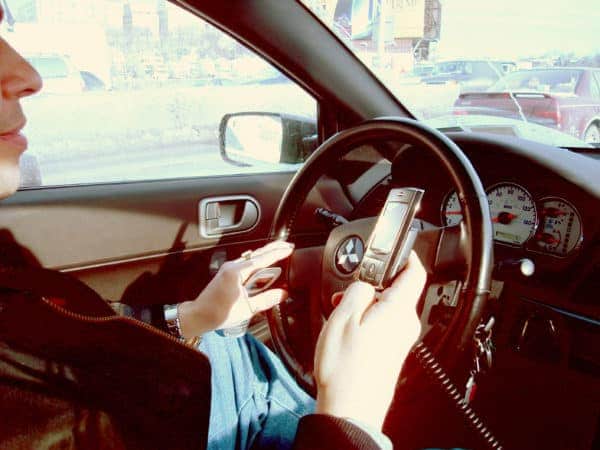
 Computer scientists at the University of Waterloo can now tell when you’re driving and texting, and they plan to use the new technology to help prevent distracted driving, which is now a more serious road concern than impaired driving.
Computer scientists at the University of Waterloo can now tell when you’re driving and texting, and they plan to use the new technology to help prevent distracted driving, which is now a more serious road concern than impaired driving.
Researchers with the Centre for Pattern Analysis and Machine Intelligence (CPAMI) at Waterloo used artificial intelligence to develop algorithms that can recognize certain driver actions such as texting, talking on a cell phone or reaching into the backseat. With the aid of cameras trained on the driver’s hand positions, it can classify behaviours by how much of a safety threat they might pose.
The goal, say the researchers, is to be able to warn drivers when they’re not concentrating on the road and, potentially, to enact precautionary measures when the situation calls.
“The car could actually take over driving if there was imminent danger, even for a short while, in order to avoid crashes,” said Fakhri Karray, director of CPAMI and contributor to the new research, who along with his colleagues recently presented their work at the 14th International Conference on Image Analysis and Recognition in Montreal.
The CPAMI team are working on a series of projects related to distracted driving, with one for detecting pupil size and heart-rate variability and another for recognizing signs of driver fatigue such as frequent blinking and head positioning.
“It has a huge impact on society,” says Karray.
Research has shown that drivers who text are 23 times more likely to get in an accident and are six times more likely to cause an accident than when driving while drunk. Smartphones are now the most common form of driver distraction, as along with texting, one in five drivers admitting to surfing the web on their phones while driving.
A United States report estimates that distracted driving by teens is a particular problem, causing 330,000 injuries each year and 4,000 deaths. A survey of high school students in Ontario found that 33 per cent of students in grades ten to 12 said that they have texted while driving at least once in the past year, with the rate rising to 46 per cent for grade 12 students alone.
Debate is growing over whether or not technology, the cause of increased driver distraction, can actually be its saviour, as well.
Part of the hype surrounding the development of autonomous vehicles is the claim that they will make roads safer, with less chance for human variability and error to lead to accidents. Yet its detractors say that the technology is, at least for the foreseeable future, focused on creating not fully autonomous but semi-autonomous vehicles, meaning that drivers will still need to be very much involved in driving and stay alert to potential dangers.
The issue of autonomous vehicles potentially lulling drivers into a false sense of security was brought to light in 2015 when a Tesla Model S collided with a tractor trailer in Florida, killing the Tesla driver. An investigation found that the car’s Autopilot driver-assist system was not at fault and that the car’s driver had at least seven seconds to recognize the tractor trailer prior to the crash and was therefore assumed to have not been paying attention.
Leave a Reply
You must be logged in to post a comment.




 Share
Share Tweet
Tweet Share
Share




Comment